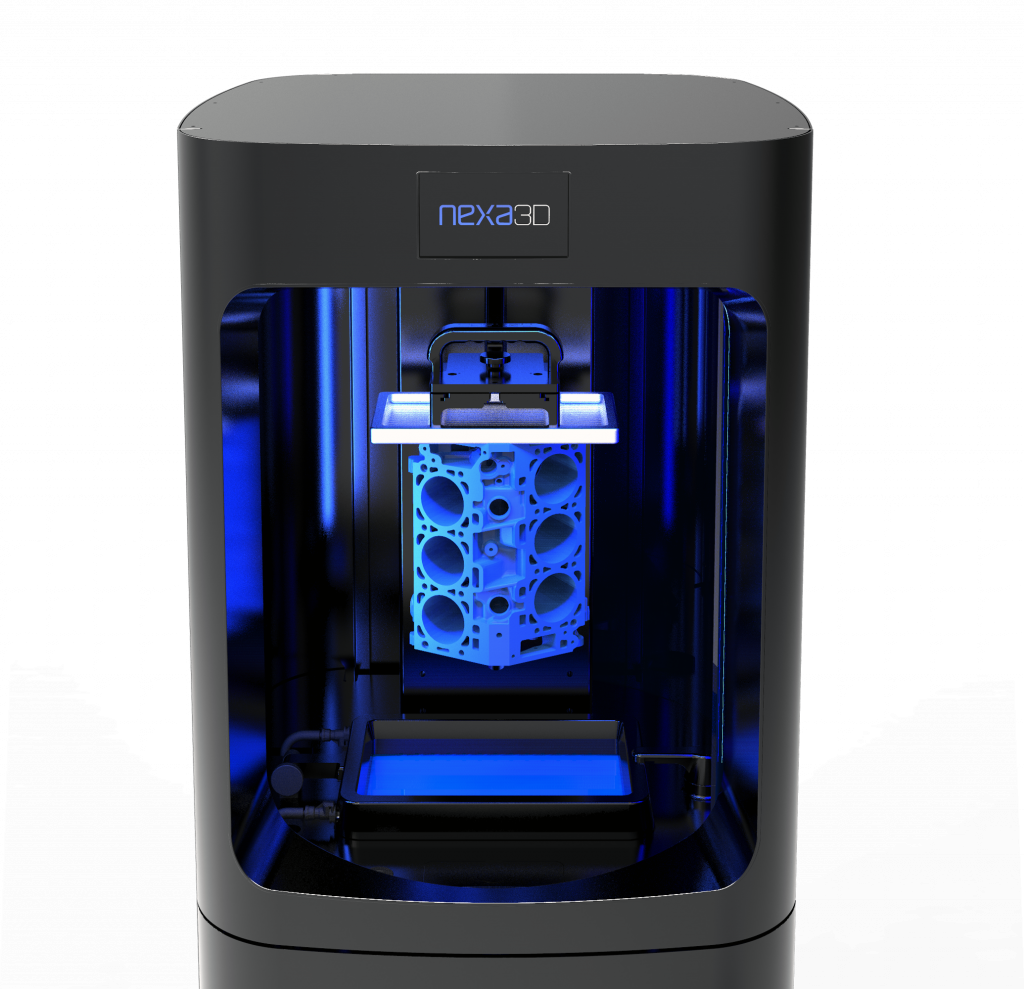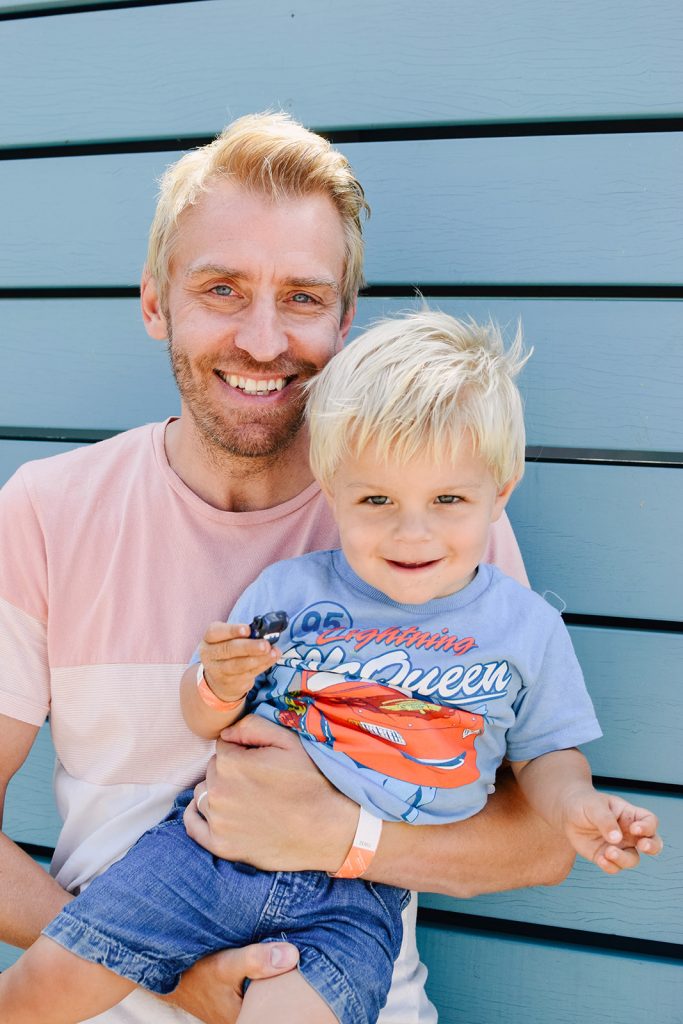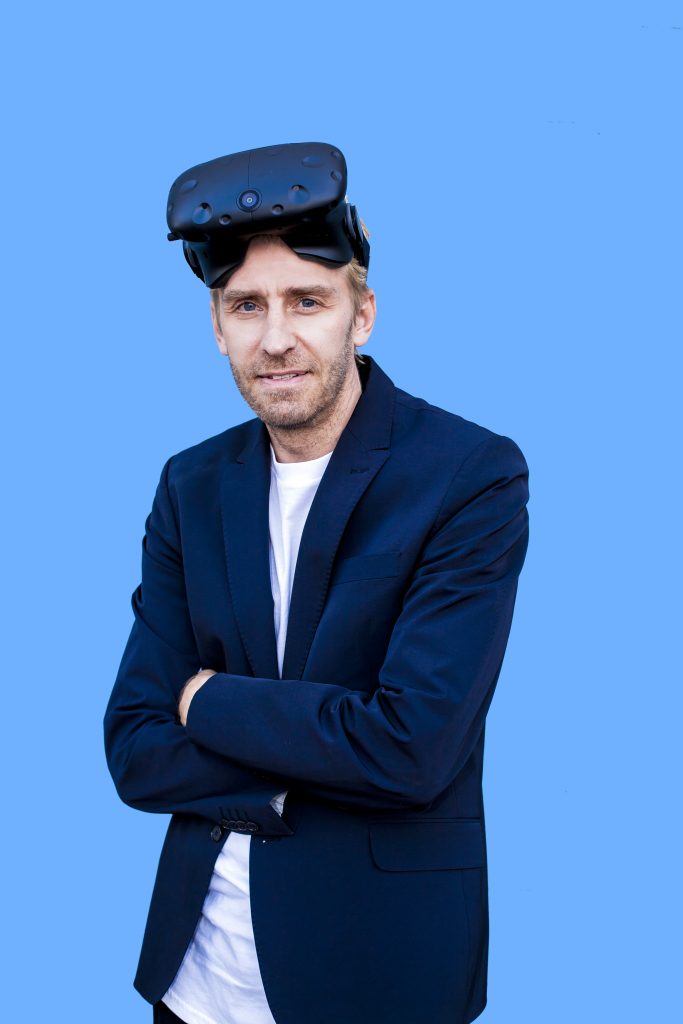We had a chance to catch up with 3D pioneer, Janne Kyttanen, to talk all things 3D, and a little bit about fatherhood too. Janne has been behind the scenes quietly working on several 3D related projects that he can now share with us in more detail. In addition to co-founding a VC, Janne consults to companies to help with the ever-changing landscape of 3D in order to prepare for digital transformation and avoid 3D confusion. Janne also tries to add value to a brand with design solutions, identifying new 3D technologies or simply coming up with new tech strategies to disrupt the industry. Janne was instrumental in making some of the first design jewelry, lamps, and furniture in 3D printing. He also started 3D printing’s first design label .MGX and the first design studio FOC before leading design at 3D Systems. In addition to leading in design and tech development, Janne has also made some of the most iconic 3D printed design pieces to date which are in the permanent collections of museums worldwide. It is always a good time to find out what the pioneers in our industry are doing.
How did you get into 3D Printing consulting?
“Perhaps I have grown along with the industry. The truth is 20 something years ago, when I first got into 3D printing, I was focused more on selfish goals. After joining 3D systems in 2011, I woke up and started to realize how many companies and people are confused about 3D. Whether it is a 3D printing company not maximizing their tech in creative ways or companies wanting to get into 3D but making horrible purchase decisions in order to achieve that goal. I became tired of watching from the sidelines and decided to do something about it.
“Plus, 10 years ago when people started buying in-home 3D printers, the level of consulting was more about of the best filament to use or printer to buy in order to make Yoda heads. The 3D printing industry is now at a place where it is starting to create a real FOMO effect for big companies if they don’t get involved. It’s not hype or some distant future promise anymore, but there is real data to back it up.”
Why did you get started in 3D printing and what makes you tick after all these years?
“In general, I love how technologies constantly make our lives better and more efficient. 3D printing is no different. However, as previously mentioned, what is not efficient – big corporations’ and their adaptation to change. They have the people, the money and all the resources under the sun, but still seem to make poor decisions when it comes to adopting tech or digital transformation. The main question for me is “why does history repeat itself even if the signs are written on the wall?”
“I suppose what makes me tick is helping organizations adapt to new technologies by creating the right strategies and thinking through effective steps for implementation to support the inevitable changes before they experience disruption.
“Many reading this interview might be able to relate to this picture. A CEO puts their fist on the table and insists the company gets into 3D printing but fails to first require his executives to present a thorough implementation plan which answers key questions. For example, what will these printers do and who will they serve, who will operate and service them, how will we buy software and materials, do we have the right skills in-house and if not, what and how do we acquire them, is now the right time or is the market ready, etc. It’s a classic example where companies may have the right vision but fail with the strategy and execution. My goal is to be in that meeting room before they get into the 3D game.”
Will you still offer design services?
“People probably know me mostly from my design work within the industry and as a result, I still get requests like: “Can you design our new machine, how long will it take and how much does it cost?” My general answer is: “it takes 25 years and 5 minutes.”
“For me, the design is the simplest part of the equation. My true interest lies in connecting the dots and providing the right network: materials, software, applications, distribution and connecting them all into the final product. So I am not just interested in designing “things” for companies, but rather designing the structure, processes, and resources which support the company to sell their products effectively.
“A good example of this is a recent project with Nexa 3D.”

You were absent from the industry for a few years and now it looks like you are back in the game. What have you been up to after leaving 3D Systems?
“I may have appeared quiet and absent, but I never really left, I was just perhaps not as visible. Even though the industry was still collecting its marbles after the stock market plummeted, I found an opportunity to co-create a VC fund, WTFVC, where my partner and I design and invest in our own ideas. We start companies from the ground up, providing interim management, and then hire kickass CEOs to run with them in return for equity. We also do some external investments too, but only when they add value to the family of companies we are creating. So we are creating 3D ventures for highly specific applications.
“One of those companies was Pixsweet, a business-to-business solution offering custom 3D ice pops as edible marketing magic for brands and events alike. At the core of it all is technology we invented, 3DTI or 3D thermoform injection, where 3D printing is used as a tool in the overall additive manufacturing process as opposed to the mean to an end. It’s a classic example where technologies collide, and the result is the unexpected. Its part search engine, part food science, part 3D printing and part food packing tech. The vision was to empower everyone so that they could Taste the Internet by turning any image into 3D food in a matter of seconds in the cloud.”
“And if you are wondering – why ice pops? My quick sarcastic answer is why not. The longer answer is that the application hadn’t changed in over 100 years and it seemed like a simple way to disrupt three ancient industries at the same time: 3D printing, food distribution and thermoform packaging tech. The reality is that 3DTI can handle any liquid, paste or gel type substance. We just decided to first focus on food. On average, the food packaging industry runs businesses in the 5% EBITDA range (e.g. meat or cheese). In a nutshell, they make a few cents per product, which at the end of the day is a cutthroat business. And they only have one channel, which is high volume retail, meaning they are pretty much cornered. We can make their lives a lot easier through 3D.
“We are talking about massive industries here, which have not changed for decades, so, unfortunately, it’s not a fast process, but we are happy with the progress and will soon be announcing new large-scale partnerships with our technology.”

What was the reason for starting the VC?
“I saw a void in the investment world where some people have the money and others have the ideas. My goal is to help these two worlds collide. We are busy creating a family of ventures, which all add value to each other. Somebody might be creating software, which adds value to a new manufacturing tech we are creating and vice versa. Somebody might also approach me for consulting for them, but we might end up investing in them or become board members.”
What kind of startups do you guys create?
“We are focused on the unexpected disruptive 3D innovations, which nobody else sees. The kind of oddballs, which at first seem so strange, that they are interesting. Unless your organization is structured with a separate skunkworks unit, blue sky innovation hardly ever happens from within organizations. It hits you in the back of the head when you least expect it. It’s the classic innovator’s dilemma within big organizations, which keeps on repeating itself time after time. Most companies are simply structured to make money as fast as possible, incrementally improving what they have, streamlining their channels, automating processes etc. It is not in their interest to deliberately disrupt what they have built, even if it would provide longer term success or more competitive advantage. If we take an example from the 3D printing industry, Stratasys didn’t create a $100 plywood FDM machine 2009, which became the catalyst for disrupting the industry. 3D Systems didn’t create a tabletop SLA machine until very recently. Both of these companies could have created these machines in their sleep, but they didn’t. It simply didn’t make sense, since it would have cannibalized existing channels. Rest is history.”
What’s next for you?
“How much time do you have? LOL.
“On the personal side, my wife and I are busy raising our toddler son, Aiden. Who happens to be very organized, independent, hyper focused (wonder where he gets that from) and is obsessed with all things cars (he did not get that from me). Becoming a father has been the hardest and best thing I have done in my life. I am constantly amazed at the speed of development, overwhelmed with the love I have for him and anxious to start creating and building things together, especially with all the new tech entering the market in 3D, AR and VR.”

Credit Brenda Marie Winburn.
“On the professional side, the VC is busy finalizing a few investments in software companies while looking for new opportunities. We are also on the lookout for more 3DTI applications. And in the consulting world, I am busy with some existing projects and in discussions with several other opportunities that I can’t wait to get involved with.”

Subscribe to Our Email Newsletter
Stay up-to-date on all the latest news from the 3D printing industry and receive information and offers from third party vendors.
You May Also Like
Precision at the Microscale: UK Researchers Advance Medical Devices with BMF’s 3D Printing Tech
University of Nottingham researchers are using Boston Micro Fabrication‘s (BMF) 3D printing technology to develop medical devices that improve compatibility with human tissue. Funded by a UK grant, this project...
3D Printing Webinar and Event Roundup: April 21, 2024
It’s another busy week of webinars and events, starting with Hannover Messe in Germany and continuing with Metalcasting Congress, Chinaplas, TechBlick’s Innovation Festival, and more. Stratasys continues its advanced training...
3D Printing Webinar and Event Roundup: March 17, 2024
It’s another busy week of webinars and events, including SALMED 2024 and AM Forum in Berlin. Stratasys continues its in-person training and is offering two webinars, ASTM is holding a...
3D Printed Micro Antenna is 15% Smaller and 6X Lighter
Horizon Microtechnologies has achieved success in creating a high-frequency D-Band horn antenna through micro 3D printing. However, this achievement did not rely solely on 3D printing; it involved a combination...





























